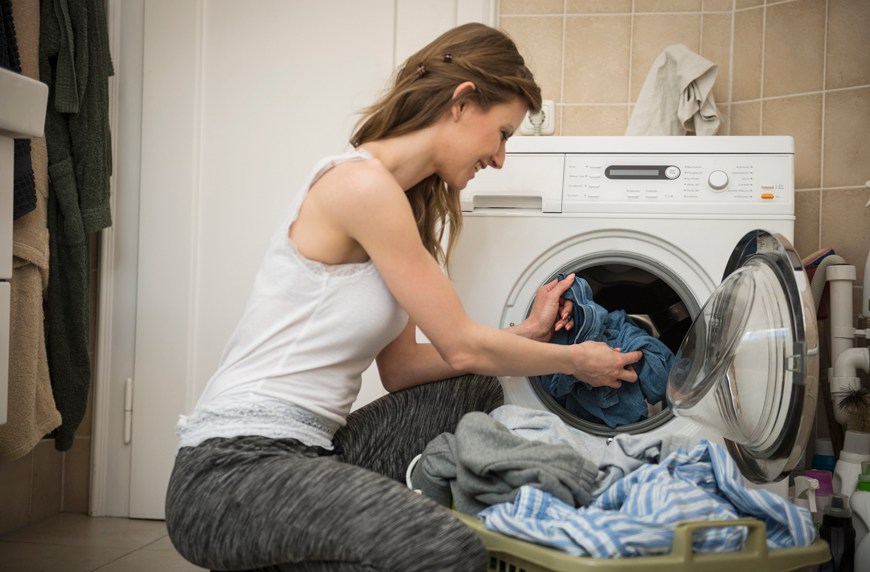This, Clean My Space founder Melissa Maker tells me, is probably due to the fact my pet-obsessed former flame doesn't wash his machine—because yes, you need to do so whether you have cats or not. So, how do you tell when the home appliance could use a refresh?
"An indicator for you might be that your clothes aren't coming out looking clean—they sort of smell or look a little dingy," Maker says. "You'll notice it especially with whites, if they just don't come out looking clean it's a really good sign your machine needs a washing."
TBH, I've never even thought about the fact that something constantly soaked in suds would need its own bath. But now that Maker's set me straight, she's sharing how to clean your machine in four easy steps below.

Step 1: The tray
First and foremost, says Maker, you need to look at where your laundry soap is going. "If you're using too much detergent, you can get a gross buildup of detergent that never made it into the drum, which is why using the proper dose is so important," she says. "Just remove the container—you can clean it with a little soapy water, allow it to dry really well, and then replace it and promise yourself you'll use the right amount of detergent [moving forward]."
Step 2: The drum
Maker tells me you can just give the drum a quick wipe down with a cloth dipped in plain white vinegar; however, if that's not quite enough, most machines have something called tub-clean cycle. "It's just a super-hot, super-long cycle," she explains. While you don't have to put any detergent into this rinse, Maker says you can buy tablets at the grocery store designed specifically for washing machine cleans, e.g. Afresh.

{{post.sponsorText}}
Step 3: The gasket
The rubber ring which goes around the exterior of the drum and acts as a buffer between the door and the drum is known as the gasket, and it needs cleaning, too. "A lot of moisture can build up in your gasket, and that's why machines can smell moldy sometimes—bacteria starts building up and then mildew and mold start forming," she explains. For this reason, she recommends giving it a quick wipe after every use. "I just take my cloth and I stick it in the gasket and run it around the ring one time and I'm done," she says. Maker also tells me she always leaves the machine door open so moisture has less of a chance to fester inside; however, if it's too late and you have a mold or mildew problem she recommends grabbing a bottle of Concrobium (directions on bottle).
Step 4: The pump filter
The last area of the machine that needs tending to is called the pump filter, and Maker tells me it's located in different places on every machine. When you find yours, you're going to want to clean it once or twice a year. "Drain it first, which is a lot easier than it sounds. You just pull out the little hose, put it over a bucket, and let it open up and drain out. Then you can twist out the pump filter, give it a rinse, clean it with a little cleaning toothbrush, and put it all back together," she says.
Looking for a non-toxic detergent? This DIY version is made from just four ingredients. Plus, here's how to solve three common laundry problems for under $5.
Loading More Posts...